AVOID
• Medications that contain diphenhydramine, such as Benadryl and Tylenol PM, which can cause temporary confusion and temporary memory loss. Alcohol, other recreational drugs, and blood pressure medications such as methyldopa (Aldomet) or propranolol (Inderal), and some tricyclic antidepressants such as amitriptyline (Elavil) can also adversely affect memory. Consult your doctor.

• Having high blood pressure, and keep your cholesterol levels, especially the LDL levels, regulated.
MENOPAUSE
THE FEMALE REPRODUCTIVE CYCLE begins during the teen years and declines around the fifth decade of life. The ovaries gradually reduce their production of female hormones, such as estrogen, as a natural biological process. The end result of this decline is the cessation of menstruation. Known as menopause, this process affects every woman, though some experience a higher degree of discomfort than others. Without the beneficial effects of estrogen, women are at a higher risk of developing medical conditions such as cardiovascular and degenerative bone disorders. As estrogen production declines, the body’s hormonal balance is lost, resulting in menstrual irregularities, hot flashes, night sweats, mood changes, and memory impairment. Some women may also experience cold hands and feet, insomnia, loss of skin elasticity, weight gain, and urinary and vaginal changes. Western medicine has traditionally recommended hormone replacement therapy (HRT), with both estrogen and progesterone. However, after some results of the landmark Women’s Health Initiative were published in 2002, the use of HRT dropped significantly, and breast cancer rates dropped dramatically the following year. Studies are still in progress, but experts believe that reduced HRT use resulted in the lower occurrence of estrogen-sensitive breast cancer.
Estrogen and other hormones represent the yin, or the substance aspect, of the body. Hormones are primarily associated with the essence of the kidney-bladder network. The decline of the kidney essence over time affects the formation of blood, bones, and body fluids, producing symptoms of dryness, aging, and bone degeneration. Chinese medicine has long recognized that the human body is highly regenerative. By providing the right nutritional foundation and supporting glandular functions, all biological substances—including hormones—can be naturally restored without replacement. This is a basic tenet of the Taoist art of longevity. The key to dealing with bodily decline is to address it early, during perimenopause, before menopause sets in. With an appropriate diet, lifestyle, and exercise regimen, and by using acupuncture and herbal therapy to support healthy glandular function, the passage through menopause can be smooth and even empowering.
A patient who came to see me about five years ago for mood disorders is representative of the many women I see who are going through menopause. She had been put on antidepressants and antianxiety drugs by her psychiatrist but was still having symptoms. She wanted to get off the medication. I never recommend that a patient go off any medication without checking with the prescribing physician, so I called up her psychiatrist and worked out a therapeutic program that he agreed with. As I began treating her, I noticed that she had started to show perimenopausal symptoms. Within two months, she developed hot flashes, insomnia, palpitations, anxiety upon waking, and weight gain, and her mood took a turn for the worse. I knew that unless we turned our attention toward regeneration, her mood wouldn’t improve. As I worked on her menopause issues with acupuncture and herbal therapies, I spoke to her about the concept of Second Spring. Menopause is a pivotal junction in a woman’s life. The loss of childbearing capability can represent freedom for a woman for the first time to live her life as she wants to. Typically the first half of a woman’s life is devoted to family and does not belong to her. By menopause many women’s familial responsibilities have been substantially fulfilled, making it an opportune time for a woman to reestablish her personal and sexual identity. The process can be very empowering. I counseled my patient on changing her diet, lifestyle, and even career choices. She is now past menopause and has lost most of the weight she gained, is symptom free, and is happily pursuing a new career. Moreover, she has been off the psychotropic drugs for more than two years, with the blessing of her psychiatrist.
The following suggestions are those that I give my patients who are nearing or going through menopause.
DIET
• Diet should include ample leafy green vegetables for their mineral content; nuts, seeds, and their oils; rich supplies of essential fatty acids; lean protein sources including fish, egg whites, shellfish, and poultry; and beans and legumes for their abundant supply of natural phytoestrogens—Mother Nature’s hormonal supplement. Eat a large variety of foods to ensure the broadest nutritional support.

• Stop smoking and eliminate alcohol, dairy products, coffee, sugar, deep-fried, fatty foods, and processed, refined foods.
HOME REMEDIES
• Make your own trail mix, including almonds, sunflower seeds, walnuts, dried cranberries, prunes, and goji berries, or any other combination of nuts, seeds, and dried fruits. Their high content of antioxidants, essential fatty acids, and fiber helps provide nutritional support during menopause, and they are good for memory too.

• Cook up some Second Spring Chili, with beneficial phytoestrogen-rich beans and legumes: 1/2 cup each soy, black, kidney, navy, and adzuki beans, with 1 can tomato paste, 4 cups chicken stock, 4 cups water, 1 teaspoon turmeric, 5 chopped garlic cloves, and 1 chopped onion. Cook for 2 hours and add water as needed. Feel free to adapt the recipe to use your favorite beans, vegetables, and spices.

• Make a juice from cucumbers, celery, watermelon, and apples to relieve hot flashes.
DAILY SUPPLEMENTS
• Essential fatty acid supplements, including fish oils (1,000 milligrams EPA; 800 milligrams DHA), evening primrose oil (450 milligrams GLA), flaxseed oil, and borage oil are helpful for reducing symptoms of menopause.

• Vitamin B complex and vitamins C (1,000 milligrams), and E (800 IU) can help you cope with the changes, especially mood swings, of menopause.

• Vitamin D (800 IU), calcium (1,000 milligrams), magnesium citrate (500 milligrams), boron (10 milligrams), and zinc (50 milligrams) can help support bone health during menopause.

• DHEA (1 gram) is a precursor nutrient for the production of hormones in the body.
HERBAL THERAPY
• Herbs can be found in health food or vitamin stores, online, and at the offices of Chinese medicine practitioners. Herbs should be used according to individual needs; consult with a licensed practitioner for a customized formulation. To learn more about the herbs listed here, go to www.askdrmao.com.

• Black cohosh, red clover, evening primrose oil, saw palmetto, and valerian are herbs used to help cope with menopausal symptoms.

• A tea made from motherwort, mulberry, sesame, zizyphus, and Chinese senega supports healthy menstruation and calms the spirit.

• A formula from our family medical tradition called Passages Plus helps provide support for my menopausal patients. It includes herbs traditionally used in Chinese medicine for healthy hormonal function, such as wild yam, rehmannia, dong quai, epimedium, fermented soybean, conch shell, zizyphus, gardenia, alisma, peony root, and other Chinese herbs.
EXERCISE
Regular physical exercise has been clinically proven to alleviate the symptoms of menopause. I recommend a 30-minute walk every day combined with the Eight Treasures Qi Gong mind-body exercise. One section of the practice that I often use with my patients, known as The White Crane Strengthens Its Vital Force, helps strengthen vital energy and support menopausal changes. Do the sequence twice daily for optimum results.
In a quiet, comfortable environment, preferably outdoors, stand with your feet shoulder-width apart, knees slightly bent, spine erect, tailbone tucked in, and head tilted slightly forward. Drape your arms at your sides, with your shoulders relaxed.
Begin with rhythmic, slow, and relaxed breathing. Inhale deeply but softly, and imagine the breath extending all the way down to the lower abdomen, about two finger-widths below the navel. Exhale gently and softly. Stay in this position for 7 breath cycles, relaxing and calming your mind.
Now, begin the exercise: On an inhale, raise your arms to your head, placing your palms behind your head and interlocking your fingers.
Exhale, and bend forward at the hips while gently pushing your head down with your interlocked hands. As your head reaches the lowest point, move your hands over your head and extend them to the ground in front of you, keeping your fingers interlocked.
Push your extended hands down toward your feet, touching the tops of your feet.
Inhale, and grasp the backs of your ankles with both hands, pulling your bent upper torso toward your legs. Touch your nose to one knee, if possible.
Exhale, release your grip on your ankles, and gently rise up with your hands in front of you and your palms facing the ground.
Repeat the above sequence 3 times.
This exercise should be gentle, smooth, and rhythmic. Don’t overstretch or force the movement. If you’re unable to touch your nose to your knee, just bend as far as you can.
ACUPRESSURE
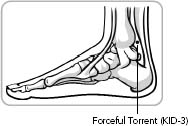
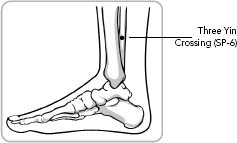
• Find the acupoint Forceful Torrent (KID-3), in the depression between the inner anklebone and the Achilles tendon of the right foot. Apply steady pressure with your right thumb until you feel soreness. Hold for 2 minutes. Repeat on the left foot. This point benefits the urinary system and strengthens the kidneys.

• Find the acupoint Three Yin Crossing (SP-6), four finger-widths above the inner ankle of the right foot. Apply steady pressure with your right thumb until you feel soreness. Hold for 2 minutes. Repeat on the left foot. This point benefits the kidneys and helps strengthen the yin energy.
AVOID
• Nicotine, coffee and alcohol; their use has been shown to worsen menopausal symptoms.

• Stress and emotional upset, which can cause an adrenaline rush that heightens hot flashes and sweats.
MENSTRUAL DISORDERS
MONTHLY MENSTRUAL PERIODS ARE A NORMAL PART of a woman’s life. Menstruation is essential for the renewal of the uterine lining in preparation for pregnancy. Major fluctuations in hormone levels precede a menstrual period, and it is normal to feel minor discomfort before and during menstruation. However, many women experience severe symptoms or painful menstruation. Painful menstruation, or dysmenorrhea, is more common in young women in their teens and twenties than in older women, and it can be secondary to an underlying condition such as endometriosis, pelvic inflammatory disease, ovarian cysts, or premenstrual syndrome (PMS). The symptoms of painful menstruation begin days before the onset of menstruation, and can continue throughout the cycle. Symptoms include lower abdominal cramping, a dull ache that often radiates to the lower back, heavy menstrual flow with or without clots, dull headaches, constipation or diarrhea, frequent urination, and mood changes including anxiety or depression. Stress, lack of exercise, and excess caffeine use can also cause menstrual discomfort and PMS. In Western medicine birth control pills or other hormonal agents, diuretics, and antidepressants are often prescribed.
In Chinese medicine, a healthy menstrual cycle relies on several factors, including the condition of the blood, the level of energy, and the proper functioning of the liver and kidneys. For example, if there is heat in the blood or a stagnation of energy resulting from emotional imbalance and stress, the menstrual flow becomes disrupted, causing pain and discomfort. Many women also suffer from a condition in which cold affects the uterus, causing severe menstrual cramps and pain. Stress and intense emotions, especially anger, frustration, and resentment, can easily depress the liver. Over time, the stagnation turns into heat, pushing the blood to flow out heavily with clots and pain.
In one case, a patient of mine would go from being gentle and sweet to rageful and anxious—like Dr. Jekyll and Mr. Hyde—as soon as she hit her ovulation. Two weeks later, when her period would start, she’d return to being her sweet self. Her menstrual pain was unbearable as a result of recurrent endometriosis, which had already been treated with surgery three times. She was referred to me by her gynecologist, and together we created a treatment plan involving diet and nutrition, acupuncture and herbal therapy, exercise, and meditation. After about six months, her symptoms were reduced by about 90 percent. She was quite happy, but the happiest person was her husband, who once remarked that I had saved their marriage.
Following are some recommendations for treating menstrual problems. Be sure to have your gynecologist examine you thoroughly to rule out fibroids, endometriosis, polycystic ovarian syndrome, or other serious disorders.
DIET
• Diet before, during, and after menstruation can have direct bearing on the duration and severity of menstrual symptoms. I recommend a balanced diet rich in green leafy vegetables, whole grains, and moderate to small amounts of organic animal protein. Foods high in essential fatty acids, including cold-water fish, nuts such as almonds and walnuts, and seeds such as sesame and cassia, are helpful. One week prior to the onset of your cycle, I recommend that you incorporate scallions, chives, ginger, fennel, orange peel, spinach, walnuts, hawthorn berries (make tea), raspberries, saffron, tarragon, bay leaf, cinnamon, and black pepper into your diet.

• Alcohol, caffeine, chocolate, and vinegar should be avoided around the time of your menstrual period, as should saturated fats, sugar, raw fruits (except berries), salt, and dairy products. Animal proteins should be eaten in moderation.
HOME REMEDIES
• Make a broth by boiling 3 slices of ginger, 1 chopped green onion, 1 fennel bulb, the dried peel of 1 small orange, and a pinch of black pepper in 3 1/2 cups of water for 10 minutes. Strain, and drink 1 cup 3 times a day beginning 1 week prior to the onset of menstruation.

• Make tea by boiling 1 teaspoon each of hawthorn, cinnamon, and turmeric in 3 1/2 cups of water for 30 minutes. Strain, and drink 3 cups daily. This is a good remedy for abdominal bloating, distention, and pain.

• Take a hot Epsom salt sitz bath daily before the onset of your period. Once your period starts, massage ginger oil into your abdomen and place a heating pad over your abdomen for 30 minutes for pain relief.
DAILY SUPPLEMENTS
• Supplementing with vitamin B complex and vitamin E (800 IU) can help reduce stress and anxiety.

• Taking magnesium (500 milligrams) combined with vitamin B6 (50 milligrams) can help reduce cramps and pain.

• Taking niacin (200 milligrams) combined with rutin (500 milligrams) and vitamin C (1,000 milligrams) is also useful for pain relief.

• Supplementing with evening primrose oil (450 milligrams GLA) can help balance the hormonal system.

• Essential fatty acids in the form of omega-3-rich fish oil (1,000 milligrams EPA; 800 milligrams DHA) and flaxseed oil are natural anti-inflammatories that help reduce menstrual pain and clotting.
HERBAL THERAPY
• Herbs can be found in health food or vitamin stores, online, and at the offices of Chinese medicine practitioners. Herbs should be used according to individual needs; consult with a licensed practitioner for a customized formulation. To learn more about the herbs listed here, go to www.askdrmao.com.

• Chamomile tea and valerian tea can help relax the muscles and reduce pain. Chaste tree and black cohosh can also help reduce pain.

• Red raspberry tea helps to strengthen uterine tissue.

• Cramp bark, black cohosh, and Jamaican dogwood can be used to relieve pain and cramping.

• Traditional Chinese herbs used for menstrual difficulties include immature orange peel, nutgrass, silk tree, albizia bark, white peony root, angelica, or dong quai, red clover, motherwort, and bupleurum.
EXERCISE
Regular physical activity is very important for promoting the flow of qi in the body. A lack of exercise can increase the severity and duration of symptoms associated with dysmenorrhea. In addition to a regular physical exercise regimen, a good moving meditation can help balance the emotions, reduce stress, strengthen the organs, and regulate menstruation. I recommend the movement section White Crane Twists Its Body to Look Up of the Eight Treasures Qi Gong to my patients for menstrual problems. This exercise helps regulate liver energy, promotes the flow of qi and blood, strengthens the uterine muscles, and helps regulate menstruation. Do this exercise twice daily for best results.
In a quiet, comfortable environment, preferably outdoors, stand with your feet shoulder-width apart, knees slightly bent, spine erect, tailbone tucked in, and head tilted slightly forward. Let your arms hang at your sides, with the shoulders relaxed.
Begin with rhythmic, slow, and relaxed breathing. Inhale deeply but softly, and imagine the breath extending all the way down to the lower abdomen, about two finger-widths below the navel. Exhale gently and softly. Stay in this position for 7 breath cycles, relaxing and calming your mind.
Now, begin the exercise: Inhale, and widen your stance to two shoulder-widths apart. Exhale and bend forward, placing your palms on your knees so that you’re bent over at a 90-degree angle.
Inhale, and grasp the back of your left ankle with your right hand while pushing against your left knee with your left hand.
Exhale, and twist your upper torso to the left, twisting your head to look up. You should feel a stretch in your left leg muscles and back.
Inhale, release the grip on your ankle, and return to the forward bend position. Exhale, and place your palms on your knees, remaining bent over at a 90-degree angle.
Inhale, and grasp the back of your right ankle with your left hand while pushing against your right knee with your right hand.
Exhale, and twist your upper torso to the right, twisting your head to look up. You should feel a stretch in your right leg muscles and back.
Inhale, release the grip on your ankle, and return to the forward bend position. Exhale, and place your palms on your knees, remaining bent over at a 90-degree angle.
Repeat the exercise 3 to 7 times, alternating from one side to the other. Do not overstretch.
Conclude the exercise by returning to the initial standing posture and meditating for 1 minute.
ACUPRESSURE
• Locate the acupoint Valley of Harmony (LI-4), in the web between your thumb and index finger on your right hand. Apply steady pressure with your left thumb until you feel soreness. Hold for 2 minutes. Repeat on the left hand.

• Find the acupoint Great Surge (LIV-3), in the web between the big and second toes on your right foot. Apply steady pressure with your left thumb until you feel soreness. Hold for 2 minutes. Repeat on the left foot.

• Engaging these points helps promote the smooth flow of qi, soothes stagnation, and helps alleviate painful menstruation, cramps, and stress.
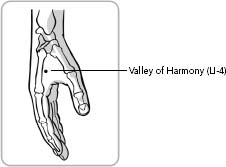
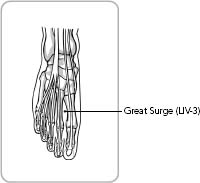
AVOID
• Coffee, alcohol, and chocolate, as they can aggravate menstrual cramps.

• Food allergies—be observant to determine which foods aggravate menstrual pain and eliminate them from your diet.

• Intrauterine devices (IUDs), which can cause painful menstruation in some women.

• Frequent urinary tract and vaginal infections, which can predispose you to painful menstruation.

• Being overtired—rest and sleep are very important for proper organ function. Get at least eight hours of sleep a night.
MIGRAINES
MIGRAINE HEADACHES ARE DEVASTATING AND DEBILITATING, and they’re often confused with other kinds of headaches. Recent studies suggest that, in addition to the common vascular system irregularities, migraines can also be caused by neurological and inflammatory conditions that affect the nerve roots in the neck. Before the onset of a migraine—sometimes up to twenty-four hours before—a large area of neurological activity in the brain is depressed; this causes inflammation, which irritates the cranial nerves. Migraines, unlike ordinary headaches, include symptoms such as nausea, vomiting, auras (light spots), sensitivity to light and sound, numbness, speech difficulty, and pain on one side of the head or in one eye. All of these symptoms are connected to the irritation of the cranial nerves. Migraines can be caused by or accompanied by sinus problems, muscle tension, eyestrain, blood sugar imbalances, or hormonal imbalances, such as premenstrual syndrome (PMS). Migraines tend to last for long periods of time—days or weeks. Researchers believe that there might be a genetic predisposition to migraines.
Migraines respond very well to acupuncture, and many clinical studies have confirmed acupuncture’s clinical efficacy for pain management. I had a patient who suffered from intractable migraines for more than fifteen years. He took all the available medication for migraines—including Botox injections—without much relief. I worked with his neurologist to formulate a comprehensive pain management plan consisting of acupuncture and herbal therapies, a hypoallergenic diet, and stress-reduction meditation and stretching exercises. After about four months of treatment, he went from two migraines a week to one or two a month. At this point his neurologist took him off of all medication and the patient continued with the remaining therapies for another two months. That was seven years ago. He now averages one or two migraines a year, and he continues to be off of all medication.
Dietary allergies play a significant role in many people who suffer from migraine headaches. It is important to identify, with the help of an allergist or nutritionist, the foods that may act as triggers for your condition.
Here are some of my favorite home remedies, but always work with your physician to rule out more serious neurological problems.
DIET
• Eat wholesome, organic foods with no preservatives, additives, or artificial flavors or colors. Artificial colors and some preservatives can cause headaches. Add a good variety of fresh fruits, vegetables, whole grains, beans and legumes, fish, and poultry to your diet. Favor fiber-rich foods including leafy green vegetables, parsley, onions, ginger, brown rice, bran, carrots, celery, asparagus, papaya, pineapple, cherries, grapes, prunes, lentils, split peas, mung beans, rosemary, oregano, cilantro, dill, sage, mint, and turmeric. Eat regularly, more frequently, and in smaller quantities. Do not eat while on the run or under stress, and do not eat late at night. Do not eat and lie down immediately afterward.

• Avoid spicy foods, heavy starchy foods, and rich and greasy foods. Alcohol and coffee should be avoided, as should be chocolate, red wine, and dairy products, especially cheese.
HOME REMEDIES
• During an acute episode of migraine headache, place ice packs at your forehead and the base of your neck for 15 to 20 minutes and soak your feet in a hot bath to help lessen the pain. Repeat several times throughout the day.

• Make a tea by boiling 1 tablespoon each of dried chrysanthemum flowers, peppermint, and green tea in 3 1/2 cups of water for 20 minutes. Strain, and drink 3 to 4 cups daily.

• Make fresh carrot and celery juice and drink a 12-ounce glass 3 times a day.

• Drinking a strong cup of coffee can abort the onset of a migraine.

• Apply Tonic Oil (which includes eucalyptus, wintergreen, and menthol) or lavender oil to the temples and forehead and massage gently in a circular motion.
DAILY SUPPLEMENTS
• Supplementing with calcium (1,000 milligrams) and magnesium (100 milligrams) can reduce the intensity and frequency of migraine attacks.

• Vitamin B complex, especially B6 (50 milligrams) and B12 (100 micrograms) can help reduce the symptoms of a migraine.

• Taking niacin (300 milligrams) during an acute attack can dilate and relax the blood vessels in the brain, relieving pain.
HERBAL THERAPY
• Herbs can be found in health food or vitamin stores, online, and at the offices of Chinese medicine practitioners. Herbs should be used according to individual needs; consult with a licensed practitioner for a customized formulation. To learn more about the herbs listed here, go to www.askdrmao.com.

• Studies show that butterbur (Petasites hybridus) extract can provide a 50 percent or more reduction in the frequency of migraines.

• Kudzu (Pueraria lobata) can help treat menstrual migraine headaches and cluster headaches.

• White willow bark and turmeric can help reduce the intensity of migraine attacks.

• Traditional Chinese herbs used for migraine headaches include gastrodia, gambir vine, abalone shell, gardenia, skullcap, motherwort, cyathulae, eucommia, loranthus, polygoni, and China root.
EXERCISE
If you feel a migraine coming on, avoid rigorous exercise, as it may speed up the onset. A gentle 10-minute walk in the fresh air may help relieve stress and reduce the severity of your migraine. Otherwise, a regular regimen of moderate cardiovascular and stretching exercises can help maintain good health and proper circulation.
Daily meditation and tai chi exercises can also help prevent migraines. Here is a simple visualization meditation called White Light Meditation that I’ve taught to my patients.
Sit or lie down comfortably. Clear your mind, relax your body, and breathe deeply and slowly.
Inhale, and visualize a white light or clear mountain spring water entering your body at the top of your head and flowing down to your abdomen.
Exhale, and visualize the white light or water continuing its downward course from your abdomen to the bottom of your feet, where it drains out.
Repeat this visualization for 10 minutes. Do this meditation as often as necessary. Usually you will experience a quick reduction in symptoms right after completing the exercise.
ACUPRESSURE
• Locate the acupoint Wind Pond (GB-20), in the natural indentation at the base of your skull on both sides of your neck. Press and lift up toward the base of your skull with your thumbs and lean your head back. Use the weight of your head against your thumbs for steady pressure on the acupoint. Hold for 5 minutes, breathing deeply and slowly.

• Find the acupoint Greater Yang (Taiyang), in the indentation of the temples. Stimulate the point with the knuckles of your thumbs or the tips of your index fingers. Massage in a circular motion for 5 minutes.

• Find the acupoint Valley of Harmony (LI-4) at the web between your right thumb and index finger. Apply steady pressure with your left thumb until you feel soreness. Hold for 2 minutes. Repeat on the left hand.

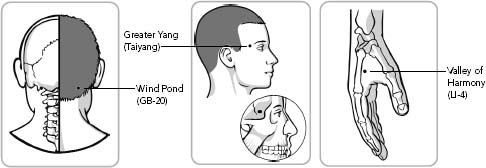
• Make sure that there are no structural imbalances in your spine, neck, or jaw, as these conditions can exacerbate headaches. Structural adjustments may be helpful—consult a chiropractor or osteopath.
AVOID
• Monosodium glutamate (MSG) and aspartame and other artificial sweeteners and preservatives, as they can trigger migraines.

• Abrupt alcohol and caffeine withdrawal or missing meals, which can trigger migraines. Contraceptive pills can also cause migraine headaches in some women.
MORNING SICKNESS
IN ABOUT 80 PERCENT OF WOMEN, the elation of being pregnant is soon brought down to earth with sickness—morning sickness—in which nausea, abdominal discomfort, dizziness, lightheadedness, and sometimes vomiting occur throughout the day, not just in the early morning hours. Morning sickness usually goes away by the second trimester of pregnancy, and by itself does not indicate serious illness, but it can have adverse effects on the nutrition of the mother and the fetus, as appetite and nutrient consumption may fall below the required levels.
Acupuncture is probably the most effective non-drug-based therapy for nausea. The National Institutes of Health recognizes acupuncture’s efficacy for treating nausea. Many pregnant women—especially those suffering from morning sickness and breach presentation—are referred to acupuncture practitioners by ob-gyn physicians. Often acupuncture, along with dietary changes and the use of mild herbs to settle the stomach, is the only treatment that can help relieve the symptoms. If you are throwing up, you must replenish fluids constantly to avoid dehydration. Make sure your obstetrician properly monitors you during your whole pregnancy.
Below are some remedies for you to try on your own at home.
DIET
• Eat a huge variety of foods and try new foods as often as you like, as appetite can be fickle during pregnancy. Make sure you get adequate protein, including choices such as chicken, turkey, lamb, and eggs, as well as healthful sources of fats, such as nuts and seeds, flaxseed oil, and olive oil. Adequate fiber is important to keep digestion regular, so load up on whole grains such as oats, oat bran, brown rice, millet, quinoa, amaranth, and buckwheat, and fruits such as berries, papaya, bananas, figs, apples, and prunes. Beans and legumes provide excellent whole nutrients and should occupy a large part of a pregnancy diet.

• Try incorporating fresh ginger, with its ability to settle the stomach and relieve nausea, into your diet.

• Don’t overeat or skip meals, as both are harmful and can worsen the condition. Eat smaller, more frequent meals and stay away from greasy, fatty foods and heavy meats.
HOME REMEDIES
• Make a tea from 3 slices of fresh ginger and a piece of dried tangerine or orange peel by boiling in 3 1/2 cups of water for 20 minutes. Strain, and drink 3 or 4 cups a day.

• Juice 1 medium potato in a juicer or a blender, pass through a strainer, and mix the juice with 1 cup of warm water. Drink on an empty stomach in the morning upon waking. The potato juice will coat your stomach and reduce acid.

• Place some crackers by your bed at night and eat a few upon waking before getting out of bed to soak up excess stomach acid.

• Cook 1 cup each lentils and rice in ample water in a slow cooker overnight and eat it as a hot morning cereal.
DAILY SUPPLEMENTS
• Taking vitamin B6 (50 milligrams) can reduce the severity of morning sickness.

• Vitamins K (80 milligrams) and C (1,000 milligrams), when taken together, can help relieve symptoms of nausea.

• Folic acid (2,000 micrograms) is important during pregnancy for prevention of birth defects. It is also an important supplement for digestive health.

• Prenatal vitamins are important to ensure adequate nutrition during pregnancy, especially for those who throw up or have a poor appetite. Try several brands to determine which settles in your stomach the best.

• L-methionine (500 milligrams) can also help in preventing nausea.
HERBAL THERAPY
• Herbs can be found in health food or vitamin stores, online, and at the offices of Chinese medicine practitioners. Herbs should be used according to individual needs; consult with a licensed practitioner for a customized formulation. To learn more about the herbs listed here, go to www.askdrmao.com.

• Make a tea by boiling 1/2 cup dried chamomile and 3 slices ginger in 3 1/2 cups water for 20 minutes. Strain and drink 3 cups daily, to treat morning sickness. This can help calm the stomach and reduce nausea and vomiting symptoms. Ginger can also be taken in capsule form (500 to 2,000 milligrams).

• In Chinese medicine, herbs play an important role in pregnancy care. Those traditionally used for morning sickness include Chinese basil, ginger, giant hyssop, cardamom, bamboo, fermented soybean, and licorice.
EXERCISE
Moderate exercise, ideally walking for 15 minutes in the morning and the evening, is best. Strenuous exercise can exacerbate morning sickness. I also recommend a light sitting meditation to help calm the rebellious qi and stop nausea and vomiting. Do the following meditation once in the morning and once during the day.
Lie down on your back or sit comfortably with your spine erect at the edge of a chair. If you choose to sit, your feet should be flat on the floor, with your legs bent at a 90-degree angle.
Reach up toward the sky with both hands on a deep inhale. As you hold your breath, make tight fists and squeeze, tightening all the muscles in your arms. Slowly exhale, relaxing your arms and bringing your fists down to your chest. Repeat this several times.
Now cross your arms in front of your chest, with your fingers touching just under your collarbone and your wrists crossed at the center of your upper chest.
Lower your chin toward your chest.
Inhale 4 short breaths in a row (without exhaling) through your nose. Fill your lungs completely on the fourth breath. Hold the breath for a few seconds with the chest full and expanded.
Exhale slowly through your mouth.
Repeat this exercise for 2 or 3 minutes, concentrating on your deep and rhythmic breathing.
ACUPRESSURE
• Acupuncture is very effective in treating morning sickness. In severe cases, I’ve had patients come for treatment every other day to get quick relief. You may use acupressure as often as you need, and you’ll see the benefits from regular use.

• Find the acupoint Inner Gate (P-6), three finger-widths above the wrist crease, between the two tendons on the inside of the left forearm. Apply moderate pressure with your right thumb. Hold for 3 minutes. Repeat on the right arm. This relieves nausea and vomiting, and reduces anxiety. Do this as often as needed, or you can buy a device that is worn on the wrist to stimulate this acupoint.
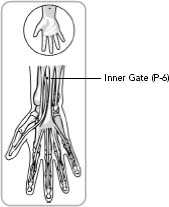
AVOID
• Coffee, alcohol and sweets, as they can aggravate morning sickness.

• Being overtired. Rest and sleep are very important, so get at least eight hours of sleep a day.

• Overeating, or going without meals for long periods of time.
MUSCLE PAIN AND SPASM
THE MORE THAN 600 MUSCLES IN YOUR BODY, whether responsible for gross movements like walking or fine, coordinated movements like smiling, are all subject to pain and spasm. Spasm occurs when a muscle contracts but fails to extend back to its original resting position. Spasms are common in adults and often occur at night. Large muscles are more susceptible to spasms, thus they occur more in the legs, abdomen, and sometimes in the back. Muscle cramps and pains occur in early childhood, as well—when they’re commonly referred to as growing pains—and they can be very painful. Athletes get muscle cramps when their muscles are required to perform sudden, heavy workloads without proper warm-up. Inactivity, anemia, tobacco use, inflammation, hormonal imbalances, arthritis, arteriosclerosis, dehydration, and hypothyroidism are some of the causes of muscle pain and spasms.
Spasms are caused by an imbalance of the electrolytes calcium, magnesium, and potassium in the muscle tissue. Chronic alcoholics can suffer debilitating muscle spasms as a result of a severe depletion of the body’s key electrolytes. Pain and muscle spasms can also be caused by lactic acid or toxin buildup as a result of muscle metabolism, viral infection, or muscle tears from injuries. Most spasms aren’t life threatening and often go away without treatment, but they can be treated with muscle relaxants, analgesics, or anti-inflammation drugs. Physical therapists use massage, ultrasound, ice and heat therapy, and exercise for muscle spasms, with pretty good results. If pain and cramping are constant during the day, you should see a physician, as this may be a sign of peripheral circulation problems such as arteriosclerosis.
In Chinese medicine, the liver-gallbladder network is responsible for nourishing the tendons and ligaments of the body. Most muscular disorders are attributed to liver energy stagnation and its inability to clear the body of toxins. Treatment of muscle pain and spasms involves restoring liver energy flow and removing any blockages. It is well documented that muscle pain responds to acupuncture. With several treatments most acute muscle spasms can be relieved quickly. In chronic pain conditions in which there are underlying deficiencies, I incorporate herbal formulations to invigorate the blood, restore electrolyte balance, relax the muscles, and relieve stagnation. I may also use cupping to increase blood flow throughout the muscle, bodywork to stretch and soothe the muscle knots formed by chronic spasms, and moxibustion, which involves heating the acupoint with the herb mugwort. On occasion, postural adjustment will take care of recurring pain. For example, a graphic artist came to me with a shoulder problem that he had suffered with for over two years. A few weeks into his treatment I asked him to show me how he works at his computer. It became obvious to me that he had his mouse pad too high relative to his seat, so I suggested he lower his mouse to below his desktop, allowing his right arm to relax with his elbow bent at a 90-degree angle rather than a 45-degree angle. To his amazement, his shoulder pain vanished a few days after he changed his work position.
DIET
• Favor foods that are particularly good for supporting muscle healing, such as leafy green vegetables rich in minerals, including spinach, collard greens, Swiss chard, mustard greens, dandelion greens, parsley, and cabbage. Fruits with natural anti-inflammatory nutrients like cherries, grapes, papaya, pineapples, and kiwi are a must. Herbs and spices that activate blood flow include cayenne, cinnamon, turmeric, and ginger. Scallions, chives, leeks, and horseradish are also mild analgesics.

• Avoid alcohol, caffeine, sugar, smoking, and stress. Strong emotions like anger and anxiety can block the liver and cause stagnation of its energy, predisposing you to muscle tension and cramps.
HOME REMEDIES
• For acute back injury, apply an ice pack to the painful area for 15 to 20 minutes, 2 to 3 times a day, during the first 24 to 48 hours.

• Take hot Epsom salt baths for 20 minutes a day until the pain is substantially decreased.

• Make a natural anti-inflammatory cocktail by mixing equal parts of unsweetened black cherry juice with dark grape juice. Drink 3 to 6 glasses a day until the pain has eased.

• Make a tea from 1 teaspoon each of cinnamon, turmeric, chamomile, and licorice boiled in 4 cups of water for 30 minutes. The tea is good for temporary relief from muscle pain and spasms. Drink 3 or more cups a day.
DAILY SUPPLEMENTS
• Calcium (1,000 milligrams), magnesium (500 milligrams), and potassium (25 milligrams) are essential components for muscle movement, and deficiencies can cause cramps. Proper supplementation can help restore the balance and prevent cramps.

• The enzyme bromelain (450 milligrams), from pineapple, is a natural anti-inflammatory and helps counter muscle and joint pain.

• Vitamin B complex and folate (400 micrograms) are generally diminished with stress and pain, so supplementation can help ease the symptoms.

• Omega-3 fatty acids (1,000 milligrams EPA; 800 milligrams DHA) in fish oil and the antioxidants in vitamin E (800 IU) are helpful for supporting healthy blood circulation and reducing inflammation and pain.
HERBAL THERAPY
• Herbs can be found in health food or vitamin stores, online, and at the offices of Chinese medicine practitioners. Herbs should be used according to individual needs; consult with a licensed practitioner for a customized formulation. To learn more about the herbs listed here, go to www.askdrmao.com.

• Turmeric, white willow bark, and valerian work in conjunction to alleviate inflammation and pain.

• Black haw, horsetail, and Jamaican dogwood are good muscle relaxants, and devil’s claw and St.-Johns-wort have anti-inflammatory and analgesic properties.

• Traditional Chinese herbs used for back pain and back health include angelica root, red peony, eucommia, siler, notoginseng, gastrodia, clematis, corydalis, myrrh, frankincense, rehmannia and achyranthes.
EXERCISE
Muscles must be used regularly in order to maintain their vitality and flexibility. Leading a sedentary life is a sure way of predisposing yourself to muscle tension and cramps. Exercise for muscle pain and spasms should focus more on stretching and flexibility and less on strengthening and bulking up. When stretching, never stress the muscle beyond what is comfortable. If it starts to hurt, stop. Always warm up prior to any exercise. Skipping the warm-up is a major cause of muscle strain and sprain. The Eight Treasures Qi Gong exercises help strengthen the tendons and ligaments and increase flexibility without excess stress on the joints. The Fourth Treasure, called the Weeping Willow Shivers in the Morning Breeze, focuses on stretching and relaxing the major muscles of the head, neck, torso, and lower limbs. Practice this sequence twice daily for best results.
In a quiet, comfortable environment, preferably outdoors, stand with your feet shoulder-width apart, knees slightly bent, spine erect, tailbone tucked in, and head tilted slightly forward. Drape your arms at your sides, with your shoulders relaxed.
Begin with rhythmic, slow, and relaxed breathing. Inhale deeply but softly, and imagine your breath extending all the way down to your lower abdomen, about two finger-widths below the navel. Exhale gently and softly. Stay in this position for 7 breath cycles, relaxing and calming your mind.
Now, begin the exercise. You’ll be making concentric circular rotations of the major muscles of the head, neck, torso, and lower limbs.
On an inhale, slowly rotate your head one half-circle, then exhale to complete the other half-circle. Do this first clockwise for 3 rotations, then counterclockwise for 3 rotations. Do not strain the muscles.
On an inhale, place your arms above and slightly behind your hips. Begin rotating your hips in a hula-hoop fashion around your pelvis, first in a clockwise direction for 3 rotations, then in a counterclockwise direction for 3 rotations, swaying the body and making the circles as full and as concentric as possible.
Inhale, and draw your feet together with your ankles touching and your knees slightly bent. Bend down and place your palms on top of your knees. Begin making concentric circles with your knees, first clockwise, then counterclockwise. Complete 3 rotations in each direction. Rest your palms against your knees during each brief transitional pause.
Next, make opposing circles with your right and left knees. With your right knee, makes clockwise circles; with your left knee, make counterclockwise circles. Again, repeat for 3 rotations, supporting your knee joints with your hands.
Repeat the previous step with your knees moving in the opposite direction, your right knee making counterclockwise circles, your left knee making clockwise circles.
Return to a standing posture.
Next, raise your right leg off the ground, with your knee slightly bent. Gently shake your leg as though you were shivering. Feel the shiver extend all the way to your foot, relaxing your leg muscles as you shake.
Repeat the shaking with your left leg.
Return to a standing position to conclude the exercise.
ACUPRESSURE
• For muscle cramping of the lower back, gluteal region, and upper thighs, find the acupoint Jumping Circle (GB-30), on the center of the buttocks about midway between the tip of the coccyx and the left hipbone. Position a golf ball on the acupoint and sit on your bed. Press against the ball with your body weight until you feel soreness. Hold for 30 seconds and release. Repeat several times, alternating on the left and right sides. This relaxes muscle spasms, increases joint mobility, and also releases sadness.

• For spasms and muscle pain in the lower legs and back, activate the acupoint Yang Spring (GB-34), on the outer part of the lower right leg, just below the bony structure located near the end of the knee crease, about four finger-widths below the kneecap. Apply steady pressure with your right thumb until you feel soreness. Hold for 3 minutes. Repeat on the left leg.

• For spasms and muscle pain in the upper extremities, find the acupoint Valley of Harmony (LI-4) in the web between your right thumb and index finger. Apply steady pressure with your left thumb until you feel soreness. Hold for 2 minutes. Repeat on the left hand.
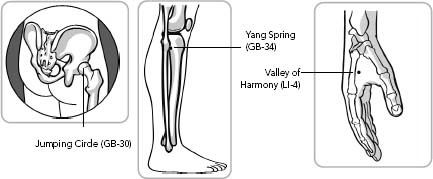
AVOID
• Smoking and excessive use of alcohol. They are irritants, and alcohol depletes the liver energy, leaving tendons and ligaments weak and malnourished.

• Certain medications used for weight loss, such as orlistat, as they can reduce levels of fat-soluble essential nutrients because they prevent the absorption of fats in the intestines.

• Jumping right back into an exercise program. As you begin an exercise program, be sure to begin gradually and increase over a period of time. Don’t assume you can perform at the level you last left off—this is a sure way of triggering a cramp or two.
NAUSEA
NEEDING TO THROW UP PROBABLY RANKS as one of the worst feelings we experience in life. Nausea is not a disease itself but a symptom of many medical conditions, some related to the nervous system and others to the stomach and digestive tract. Nausea is also commonly experienced as a side effect of many drugs, including chemotherapy medications. Morning sickness is a common symptom of pregnancy. Prolonged nausea, if accompanied by vomiting, can cause rapid dehydration, which depletes the body of vital electrolytes and should be addressed immediately. Most cases of nausea are either due to a stomach flu, food poisoning, or motion sickness.
In Chinese medicine, the energies of the body have a specific rhythm and flow. The stomach energy normally flows downward; when it fails to flow in the proper direction and reverses upward, you experience nausea and vomiting. Treating the stomach and digestive tract is key to symptomatic relief, but to resolve the condition the underlying cause must be addressed. Acupuncture is one of the most effective drug-free therapies, and the National Institutes of Health recognizes the efficacy of acupuncture for treating nausea. I’ve treated many patients for nausea caused by stomach flu, migraine headaches, and the side effects of chemotherapy. Success rests on calming the rebellious energy and harmonizing the stomach with acupuncture and herbal remedies.
Here are some of my favorite home remedies for nausea. If you experience continuous vomiting or unexplained nausea, consult your physician or go to the emergency room immediately.
DIET
• Food plays a key role in digestive system balance. Ginger tops the list of foods to consume for relief of nausea. Stick with clear liquids and avoid heavy and rich foods. Eat wholesome foods containing no preservatives or additives and that have not been sprayed with pesticides. Eat smaller meals more frequently. Favor papayas and pineapples, as they contain bromelain, a digestive enzyme that can help counter indigestion. Eat more yams, potatoes, brown rice, oats, pearl barley, sweet rice, daikon radish, basil, parsley, sage, black sesame seeds, and apples. Drink at least six 8-ounce glasses of room temperature or slightly cool water a day. Sucking on an ice cube can give temporary relief from nausea.

• Do not overeat. Avoid cold or raw foods and spicy foods. Dairy products are hard to digest and should be avoided. Foods high in saturated fats and greasy and fried foods can also distress the stomach and digestive system. Eat unseasoned or mild foods; avoid foods with peppers, onions, and garlic.
HOME REMEDIES
• Make a ginger tea by slicing fresh ginger into 2-inch-long slices and boiling it in 1 cup of water for 5 minutes. Strain, and sip the tea slowly. Drink the tea as often as you need to keep the nausea away. You can sweeten the tea with honey if you find the ginger too spicy.

• Make cinnamon and clove tea by adding 2 cinnamon sticks and 1 teaspoon of ground cloves to 3 cups of water and boiling for 15 minutes. Strain, and drink 3 cups a day. This tea is great in the evenings, as it warms you from the inside and can give you a good night’s sleep.

• For morning sickness, have soda crackers ready on your nightstand and eat some upon waking in the morning before getting out of bed to soak up excess stomach acid and help keep nausea to a minimum.

• Slowly sip plain sparkling mineral water or soda water to settle your stomach.

• Put 5 drops of peppermint oil in a pot of hot water. Place a towel over your head and the pot, and breathe deeply to calm and settle your stomach.
DAILY SUPPLEMENTS
• Vitamin B6 (50 milligrams) can help alleviate nausea, including morning sickness.

• Vitamin K (200 milligrams) plus vitamin C (1,000 milligrams) can help subdue nausea. (Note that vitamin K can interact with blood-thinning medications—consult your physician.)

• L-methionine (500 milligrams three times a day) can help prevent nausea.
HERBAL THERAPY
• Herbs can be found in health food or vitamin stores, online, and at the offices of Chinese medicine practitioners. Herbs should be used according to individual needs; consult with a licensed practitioner for a customized formulation. To learn more about the herbs listed here, go to www.askdrmao.com.

• Chamomile and ginger are good remedies for morning sickness. As a tea they can help calm the stomach and reduce nausea and vomiting symptoms. Ginger can also be taken in capsule form.

• Traditional Chinese herbs for treating nausea include Chinese basil, ginger, giant hyssop, cardamom, bamboo, fermented soybean, and licorice.

• Make a tea from tarragon and peppermint and sip as a beverage throughout the day.
EXERCISE
The following is a meditation exercise to help treat nausea. You can do it either standing or sitting. If your nausea gets worse, keep your eyes open during the exercise and concentrate on an object in front of you.
Stand or sit with your feet shoulder-width apart, knees bent slightly, spine erect, and arms hanging at your sides. Tilt your head slightly forward. Breathe slowly and deliberately.
Inhale, and gently raise your arms straight up above your head, with your palms facing the ground.
Exhale, and lower your hands as though you were pushing down a large helium-filled balloon.
Repeat the movement 20 times, then place your hands two finger-widths below the navel, with one hand on top of the other, and rub your abdomen in a circular, clockwise motion for 7 rotations.
Vigorously swish around any saliva that has gathered in your mouth. Swallow intently, visualizing the saliva going directly down to your lower abdomen.
ACUPRESSURE
• Find the acupoint Inner Gate (P-6), three finger-widths above the wrist crease, between the two tendons on the inside of the left forearm. Apply moderate pressure with your right thumb. Hold for 5 minutes. Repeat on the right arm.
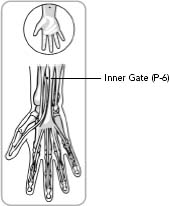
AVOID
• Many prescription and over-the-counter medications that cause nausea, in particular ibuprofen-containing medications such as Advil and Albuterol, and many antibiotics. Check with your doctor.

• Smoking and alcohol, as they irritate the stomach lining and can cause nausea.

• Overeating and lying down immediately after eating, which can cause nausea. Eating rich sauces and heavy foods can also contribute to nausea.
NOSEBLEED
NOSEBLEED, OR EPISTAXIS, AS IT IS KNOWN MEDICALLY, though alarming in appearance, is a relatively benign condition that affects over 45 million Americans. Nosebleeds often appear during the dry and cold autumn and winter months and can be caused by common colds, sinus infections, allergies, excessive use of nasal sprays, environmental irritants, and injuries. Hypertension, drug use, and taking over-the-counter medicines can also cause nosebleeds. The nasal cavities are lined with millions of tiny blood vessels, and they can bleed when injured. Most of the blood is released through the nostrils, but some can escape down the throat, causing an upset stomach. Acute nonstop or chronic nosebleeds require a visit to an ear, nose, and throat specialist for cauterization to stop the bleeding.
In Chinese medicine, bleeding has many origins. Nosebleeds can result from pathogenic heat in the blood, sinus infections, and spleen network weakness that leaves you deficient in bioflavonoids and prone to weakened blood vessels. When aggravated by anger, frustration, and bitterness the liver energy can flare upward and cause nosebleed. This is closely associated with nosebleeds caused by high blood pressure. An unhealthy diet can produce heat in the stomach, which manifests with gum inflammation and nosebleeds. In acute cases, I try to stop the bleeding with topical and oral herbal therapy coupled with acupuncture to lower pressure in the blood vessels. In chronic cases the best approach is to identify and address the underlying condition, whether the culprit is hypertension, allergies, or lifestyle.
Here are some recommendations I give to my patients. Consult with your physician immediately if you feel weak, dizzy, or faint, or if chest pains accompany the nosebleed.
DIET
• A generally healthy and balanced diet with smaller and more frequent meals and ample amounts of complex carbohydrates and wholesome protein sources is a good start. Favor celery, yarrow flower (make tea), bananas, sunflower seeds, honey, soy products, mung beans, bamboo shoots, seaweed, whole grains including buckwheat, and green leafy vegetables such as spinach, broccoli and kale. Dandelion greens, chrysanthemum flowers and cassia seeds (make tea), lotus root, and hawthorn berries (make tea) are also a good addition. Drink at least 8 cups of warm or room temperature water a day.

• Avoid overeating and foods that are greasy, deep-fried, barbecued, or spicy. Alcohol and coffee dehydrate and produce dryness; they also induce heat and can cause a rise of yang energy to the head, potentially contributing to nosebleeds.
HOME REMEDIES
• Soak your feet in a hot foot bath for 20 minutes to guide the heat down and stop the bleeding.

• Apply ice packs to the forehead just above the nose and also on the back of the head just inside the back hairline. Apply pressure at the bridge of the nose until the bleeding stops.

• Insert a cotton ball soaked in witch hazel into the nostrils to stop bleeding. Witch hazel acts as an astringent.
DAILY SUPPLEMENTS
• Supplementing with beta-carotene (800 milligrams) and vitamin A (200 IU) supports the immune system’s repair capabilities.

• Vitamin B complex, especially B6 (50 milligrams), supports vascular health.

• Vitamin C (1,000 milligrams) and K (200 milligrams) can help improve clotting time and prevent excess bleeding.
HERBAL THERAPY
• Herbs can be found in health food or vitamin stores, online, and at the offices of Chinese medicine practitioners. Herbs should be used according to individual needs; consult with a licensed practitioner for a customized formulation. To learn more about the herbs listed here, go to www.askdrmao.com.

• Yarrow and liverwort tea can help prevent nosebleed.

• For nosebleed associated with colds, respiratory infections, and sinusitis, mulberry, chrysanthemum, imperata, reeds, mouton, gardenia, apricot seeds, platycodon, mint, and licorice are traditionally used.

• For nosebleed due to alcohol abuse, poor diet, or malnutrition, herbs traditionally used include rehmannia, ophiopogonis, anemarrhena, achyranthes, gardenia, and mouton.

• For nosebleed resulting from stress and emotional upset, herbs traditionally used include gentiana, rehmannia, gardenia, biota, cyathulae, alismatis, plantaginis, skullcap, mouton, angelica, and licorice.
EXERCISE
During a nosebleed, stop all exercise. Otherwise, a regimen of daily qi gong and tai chi combined with moderate cardiovascular exercise is helpful. Stress can increase episodes of nosebleed, so I teach my patients this stress-release meditation. Follow the simple steps below.
Sit comfortably or lie down on your back. Slow your respiration to deep, abdominal breathing. Say the word “calm” in your mind with every exhalation. You’ll be visualizing the relaxation of a body part and releasing tension with every exhalation. Trace the following 3 pathways outlined below.
Start at the top of your head. Inhale, and then exhale and visualize your scalp muscles relaxing. Say “calm” in your mind. Repeat this, saying the word with each body part as you move down through your face, throat, chest, abdomen, thighs, knees, calves, ankles, and feet. When you’ve relaxed your feet, visualize all the tension in your body leaving through your toes in the form of dark smoke.
Next start at the temple region of your head. This pathway focuses on the sides and upper extremities. Inhale, and then exhale and visualize your temple muscles relaxing. Say the word “calm” in your mind. Repeat this, saying the word with each body part as you move down through your jaw, the sides of your neck, shoulders, upper arms, elbows, forearms, wrists, and hands. Once you’ve relaxed your hands, visualize all the tension leaving your body through your fingertips in the form of dark smoke.
The final pathway begins on the back of your head. This path relaxes the back of your body. Repeat the breathing-visualization-word routine, as above, as you go from the back of your neck to your upper back, middle back, lower back, back of thighs, calves, and heels. Then focus on the acupoint Bubbling Spring (KID-1), on the soles of your feet, for 1 minute.
Practice this meditation for at least 15 minutes twice a day.
ACUPRESSURE
• Find the acupoint Valley of Harmony (LI-4), at the web between your right thumb and index finger. Apply steady pressure with your left thumb until you feel soreness. Hold for 2 minutes. Repeat on the left hand.

• Locate the acupoint Upper Star (DU-23), in the center of the upper forehead, two finger-widths inside the front hairline. Apply steady pressure with your index or middle finger until you feel soreness. Hold for 2 minutes.
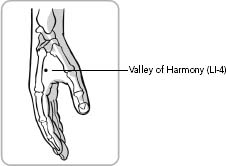
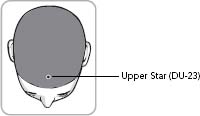
AVOID
• Exposure to dry, dusty and cold conditions by using a warm mist humidifier at home or work. Try to avoid getting a cold or the flu and do not overuse nasal sprays, as they can irritate the nasal passages.

• Stress and overexertion, and keep your blood pressure under control.
OBESITY
FOR THE PAST DECADE THE NUMBER-ONE HEALTH CONCERN in the United States has been the rapidly increasing rate of obesity. Today eight out of ten adults are overweight and some 40 million people are considered obese. Many life-threatening ailments are attributed to obesity, including diabetes, hypertension, heart attack, coronary heart disease, stroke, depression, and the growing problem of infertility. More alarming is pediatric obesity, which has tripled in the last twenty years. Our children are at increasing risk of serious health problems, including insulin resistance, pediatric diabetes, depression, hypertension, developmental problems, and even cancer.
There are physiological and psychological reasons for obesity, but it’s often a matter of energy intake versus energy expenditure. We’ve become extremely sedentary. The quality and quantity of the foods we eat has changed—food now contains tightly packed calories in smaller packages. Our drinks contain high concentrations of sugar, our meats have been treated with hormones and antibiotics, and our streets are littered with fast-food drive-through restaurants serving up heart attacks to go. Our eating habits have also changed. The family dining table has been replaced with individual serving trays positioned comfortably in front of the television, and on-the-go chow downs substitute for lunch and dinner. Breakfast has all but disappeared. All these factors are slowing down our metabolism. It’s simple: When you take in too much energy but don’t use it up, the body stores it for a rainy day.
Emotions play an important role in obesity as well. We’ve long known that emotions play a key role in disease. Our hormonal systems react to negative emotional states with the production and release of hormones that help us cope with stressful situations. These hormones are designed to protect the body from harm by shutting down or slowing down bodily functions in order to conserve energy. Thus the stress hormones slow down metabolism and promote the storage of fat. This worked well back when our ancestors were being chased by prey, but now our stressful lifestyle is contributing to the obesity epidemic. A constant state of anxiety and stress creates an imbalance of these hormones in the body, promoting weight gain.
It’s not easy to lose weight and keep it off. Many obese people require medical attention and need to be guided in a structured weight loss program. In Chinese medicine, obesity is the accumulation of dampness and phlegm and the result of declining function of the spleen network and metabolic fire of the kidney network due to stress, lack of movement, and poor eating habits. The roles of nutrition, physical activity, and emotions on the body’s metabolic functions cannot be overstated. I work with endocrine and bariatric physicians to design individual weight-loss programs for patients. My treatment program for obesity entails acupuncture and herbal therapies to restore healthy digestion and metabolism and to eliminate dampness and mucus from the body. It also includes Swimming Dragon, a qi gong exercise, and meditation to activate energy flow, besides the diet suggestions below. A study of twenty of our patients on the weight-loss program described above showed an average loss of nineteen over three months.
Here are some simple suggestions that can get you started on your own weight-management program.
DIET
• There are hundreds of fad diet programs out there, ranging from total starvation to high-protein diets promising quick fixes. The problem with dieting is that it deprives the body of food or goes to extremes with a few recommended foods. This is contradictory to our metabolism, and often the results do not last, producing a yo-yo effect and further depressing self-esteem, not to mention metabolic function. We are natural beings requiring a balance of nutrition from all sources.

• I recommend a balanced diet rich in wholesome organic foods, with no preservatives, additives, or artificial colors or flavors. Institute an eating schedule with five small meals each day. Eat sitting down at the table and eat slowly. Do not eat after 7:00 p.m., and do not skip breakfast.

• Diet should consist of a balance of organic sources of lean animal protein, complex carbohydrates, whole grains, legumes, nuts, and fruits and vegetables. Substitute brown rice, bulgur, millet, and buckwheat for white rice and pasta. Favor chlorophyll-rich foods such as broccoli, kale, spinach, asparagus, and dandelion greens. Consume more fruits and nuts, including apples, peaches, cherries, bananas, pomegranates, chestnuts, and pine nuts. Drink at least eight glasses of hot or lukewarm water a day.

• Avoid very spicy foods, as they tend to increase appetite; heavy, starchy foods; simple sugars; and fatty, greasy foods, which cause stagnation. Dairy products, especially cheese, produce dampness and mucus and should be avoided. Sweets of all kinds should be eliminated. Alcohol, soda, and coffee should also be eliminated.

• Do not eat when you are stressed, anxious, or emotional. Practice stress-release meditations or go for a walk. Eating should be a pleasurable event to be savored. Slow down your eating and chew your food well, and you will find that you eat less.
HOME REMEDIES
• Replace white sugar with natural alternatives such as stevia or brown rice syrup.

• Drink 2 tablespoons of apple cider vinegar with 1 teaspoon of maple syrup mixed in 12 ounces of warm water every morning on an empty stomach to promote digestion and increase metabolism.

• Instead of reaching for those cookies, create a low-fat trail mix including raw almonds, pumpkin seeds, prunes, and dried apples to eat in between meals to keep your blood sugar even and avoid being famished by lunch or dinner.

• Drink hot water with lemon slices as a beverage throughout the day and before eating to help reduce fluid retention and drain dampness.

• Substitute green or black tea for coffee, as tea contains beneficial polyphenol antioxidants and less caffeine.
DAILY SUPPLEMENTS
• Supplementing with chromium (200 micrograms) can help stabilize blood sugar by increasing cell sensitivity to insulin, which prevents excess blood sugar from being turned into body fat.

• Digestive enzymes such as pancreatin (500 milligrams), lipase, (1,000 IU), and amylase (1,500 IU) taken before each meal can reduce appetite.

• Vitamin B complex and kelp can help reduce water retention.
HERBAL THERAPY
• Herbs can be found in health food or vitamin stores, online, and at the offices of Chinese medicine practitioners. Herbs should be used according to individual needs; consult with a licensed practitioner for a customized formulation. To learn more about the herbs listed here, go to www.askdrmao.com.

• Dandelion greens can be helpful to regulate metabolism and aid in weight reduction, especially if the weight gain is a result of water retention.

• Garcinia cambogia (Malabar tamarind) contains hydroxycitric acid, which has been shown to inhibit fat production and decrease appetite in animals.

• Traditional Chinese herbs for weight management include lotus leaf, green tea, chrysanthemum, Chinese honey locust, atractylodis, astragalus, ginseng, and schizandra fruits. These herbs have metabolic-stimulating properties.
EXERCISE
The number one cause of obesity is inactivity. The human body is designed for physical activity. Our ancestors were hunter-gatherers. They spent most of their natural lives walking long distances to gather food, chase prey, and sometimes be chased as prey. Evolution shaped our metabolic functions for a life on the move, but today we live in opposition to our nature. Most diets fail because we do the opposite of what our bodies are designed for. They aren’t designed to subsist on meager foods. They are designed to consume a good amount of energy—and then to burn that energy. Physical activity—not necessarily exercise—is the key to a healthy metabolism. These simple changes can increase activity, helping to speed up metabolism and burn excess calories:
• Take the stairs instead of the escalator or elevator.

• Do your own gardening, or rake your yard once a week.

• Deliberately park far away from your destination.

• Go window shopping at the mall, walking the entire place.

• Get a membership at the local zoo or museums, and take your children there often.

• Step outside during your break at work and take a walk around the building.

The best way to become physically active is to use those evolutionary wonders called legs. Walk as often and for as long as you can. Walk slowly, walk briskly, or just walk. Institute a weekly walkathon or join a local hiking club. You’ll be amazed at the beautiful nature you’ll find in your neighborhood. Walk for 100 paces after each meal, and start your day or finish your day with a brisk 30-minute walk—this alone can have a wondrous affect on your energy metabolism and will help you get back into shape. Here is a simple qi gong exercise, the Swimming Dragon, that can help speed up your metabolism and reduce your appetite.
This exercise resembles a belly dance—It is a wriggling rhythmic dance of the torso, and it burns energy and promotes fat burning in the abdomen.
In a comfortable, quiet place, stand with your feet together and ankles touching, or as close together as you can get them. Place your hands over your head, with your palms together and fingers pointing up. Be sure to keep your palms together during the entire exercise.
Inhale, and push your waist out to the right side while keeping your head and upper torso straight. Simultaneously move your right elbow to the right, so that it rests at shoulder height.
Exhale, and push your waist out to the left side while keeping your head and upper torso straight. Simultaneously move your left elbow fully to the left, so that it rests at shoulder height.
Repeat this movement several more times. Every time you move your waist to the right, bend your knees a little more, lowering your entire body as you squat. Be sure to keep your upper torso and head straight. As you lower your body, move your hands lower, keeping your palms together and fingers pointing up. When your arms reach your chest, turn your fingers toward the ground and continue the movement.
When your arms reach your knees, you should be squatting. Continue the movements, now rising with each right movement until you reach the standing position. When your arms reach your chest, switch the direction of your fingers so that they’re pointing up again.
Throughout this exercise, your hands should make an S-shaped movement and your body should do a rhythmic belly dance. Remember to inhale on the rightward movement and exhale to the left.
Do this exercise during the day on an empty stomach. Begin slowly and increase the speed and vigor, warming up the whole body, but not to the point of perspiration. Practice for 15 to 20 minutes, twice a day, for maximum benefit.
ACUPRESSURE
• Find the acupoint Foot Three Miles (ST-36), four finger-widths below the kneecap on the right leg. Apply moderate pressure with your right thumb until you feel soreness. Hold for 2 minutes. Repeat on the left leg.

• Find the acupoint Abundant Flesh (ST-40), midway between the bottom of the right kneecap and the outer anklebone, two finger-widths to the outside of the shinbone. Apply steady pressure with your right thumb until you feel soreness. Hold for 2 minutes. Repeat on the left leg.
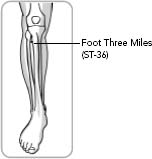
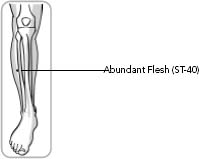
AVOID
• Sweets and simple sugars, as they pack on the calories and slow down metabolism.

• Alcohol, as it not only increases appetite but also contains a lot of sugar, which ends up deposited as fat.

• Stress and emotional upset, which release stress hormones that can slow down metabolism and promote fat storage.

• Eating after 7 p.m., as it stores most if not all of the energy as fat, especially if you are headed to bed right after eating.
PAINFUL BLADDER SYNDROME
KNOWN AS INTERSTITIAL CYSTITIS (IC) or painful bladder syndrome, this condition is a combination of chronic reoccurring symptoms such as frequent urination with a sense of urgency, sometimes accompanied by burning and pain during urination. About 90 percent of the 1 million Americans diagnosed with IC are women. The most common risk factors include chronic urinary tract infections, and a history of gynecological surgeries. IC almost always involves one or more additional chronic conditions such as irritable bowel syndrome, lupus, or allergies. Recent findings show that stress, anxiety, and being overworked often aggravate the condition. Over time, IC can cause permanent damage to the bladder wall, resulting in scarring and ulcerations, which can require surgical intervention. Typical treatment includes oral antihistamines, pain and anti-inflammatory medications, and heparin derivatives to coat the lining of the bladder.
Like other “irritable” syndromes, painful bladder syndrome is directly linked to an overstressed or overactive immune system. Chinese medicine focuses on identifying lifestyle, diet, environmental, and emotional contributions to the condition. I recall a female patient who suffered from interstitial cystitis for over ten years. After an extensive interview, I could see that her bladder would flare up every time she got emotionally upset—which was just about every other day. Since her urine tests were consistently free of infection, I thought that she might be experiencing spasms of the urethra, the tube that moves urine from the bladder to the vagina. So my approach in her case, as in many others, was to address her emotional problems while offering acupuncture to relieve the spasms and herbal therapy to help support healthy bladder and urethra functions. I also advised her on proper eating habits and stress reduction, and gave her tools such as stress-release meditation to help balance her emotions.
DIET
• Maintain a diet on the bland side, focusing on vegetables, fruits, whole grains, and fish. Watermelon, pears, carrots, celery, mung beans, adzuki beans, corn, millet, barley, oats, squash, cantaloupe, lotus root, loquats, cranberries, strawberries, grapes, guava, mangoes, and pineapple are good choices.

• Avoid all simple sugars, soft drinks, sweetened juices, fatty meats, and dairy products. Onions, scallions, ginger, black pepper, and other spicy foods can aggravate the condition. Alcohol, spices, chocolate, and caffeine, often contribute to bladder irritation and inflammation. Highly acidic foods, including carbonated beverages, tomatoes, citrus fruits and beverages, and vinegar can aggravate interstitial cystitis. It is important to identify the specific foods that cause irritation and eliminate them from your diet, as these vary from person to person.
HOME REMEDIES
• Drinking 3 cups of unsweetened cranberry juice a day during a flare-up can prevent bacteria from adhering to the walls of the urinary tract. Drink 1 cup a day for prevention.

• Drink freshly squeezed watermelon juice or watermelon seed tea. Boil 1/3 cup watermelon seeds in 3 1/2 cups of water for 30 minutes. Strain. Drink 3 cups daily.

• Drink corn silk tea instead of water during flare-ups. Boil a handful of corn silk in 3 1/2 cups water for 30 minutes. Strain. Drink 3 cups a day.

• A hot sitz bath with Epsom salts can provide temporary relief of pain and discomfort.
DAILY SUPPLEMENTS
• Taking vitamin C (1,000 milligram) and bioflavonoids (2,000 milligrams) is helpful for healthy immune function and is antibacterial.

• Beta-carotene (2,500 milligrams) and zinc (50 milligrams) support healthy immune function and promote healing of mucous membranes.

• Taking probiotics such as acidophilus (3 to 5 billion organisms) can help to maintain healthy immunity in the mucous membranes.
HERBAL THERAPY
• Herbs can be found in health food or vitamin stores, online, and at the offices of Chinese medicine practitioners. Herbs should be used according to individual needs; consult with a licensed practitioner for a customized formulation. To learn more about the herbs listed here, go to www.askdrmao.com.

• Buchu, honeybush, uva ursi, thyme and parsley are used for urinary tract conditions. Corn silk and couch grass help soothe the inflammation and ease urination. Horsetail and plantain can help heal the tissue, and goldenseal combined with coneflower is effective in treating chronic infections.

• Traditional, Chinese herbs used to support healthy urinary tract function include plantago, akebia, dianthus, water plantain, polyporus, peony, gardenia, and astragalus.
EXERCISE
Tai chi and qi gong can help reduce stress and negative emotions, strengthen immunity, and increase energy. With regular practice, you can harmonize your immune response and reduce the symptoms of interestitial cystitis. The following is a general stress release meditation.
Lie down on your back or sit comfortably with your spine erect at the edge of a chair. If you choose to sit, your feet should be flat on the floor, with your legs bent at a 90-degree angle.
Reach up toward the sky with both hands on a deep inhale. As you hold your breath make tight fists and squeeze, tightening all the muscles in your arms. Slowly exhale, relaxing your arms and bringing your fists down to your chest. Repeat this several times.
Now cross your arms in front of your chest, with your fingers touching just under your collarbone and your wrists crossed at the center of your upper chest.
Lower your chin toward your chest.
Inhale 4 short breaths in a row (without exhaling) through your nose. Fill your lungs completely on the fourth breath. Hold the breath for a few seconds with the chest full and expanded.
Exhale slowly through your mouth.
Repeat this exercise for 2 or 3 minutes, 3 times daily, engaging deep and rhythmic breathing.
ACUPRESSURE
• Find the acupoint Three Yin Crossing (SP-6), four finger-widths above the inner anklebone, in the depression near the bone on the right leg. Apply steady pressure with your right thumb until you feel soreness. Hold for 3 minutes. Repeat on the left leg.

• Find the acupoint Pure Spring (KID-5), one finger-width below the midpoint of the inner anklebone on the inside of the right foot. This point is tender to the touch. Apply pressure with the tip of your right index finger or thumb until you feel soreness. Hold for 2 minutes. Repeat on the left foot.

• Engaging these points benefits the urinary system and helps modulate the immune system.
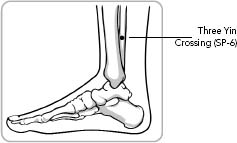
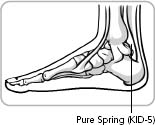
AVOID
• Alcohol, coffee, and smoking, as they can aggravate the symptoms of interstitial cystitis.

• Stress, anger, and emotional upset, as they can weaken the immune system and produce inflammatory heat in the body.

• Being overtired—get plenty of sleep and don’t overwork or exhaust yourself, as this weakens the immune system and worsens the condition.
POISON IVY AND POISON OAK
POISONS OAK, POISON IVY, AND POISON SUMAC are species of plants that contain an oily chemical known as urushiol, which is very irritating to the skin and produces a severe allergic reaction in some people. About 15 to 30 percent of the population is immune to urushiol-induced allergies. Those who aren’t experience progressively worsening symptoms of itching, redness, and skin oozing accompanied by severe burning pain at the site of contact. It usually takes up to two weeks to resolve the condition, and most of the time it leaves no scars or complications. Itching is the primary concern, since prolonged scratching ulcerates the skin, exposing it to secondary infections.
The skin is the body’s largest organ. One of its roles is immune protection, and it acts as an interface with the environment, with its millions of tiny pores through which substances exit and enter the body. In Chinese medicine, poison ivy and related contact dermatitis reactions are classified as toxic fire invading the skin. The treatment approach is to clear the toxin and relieve the symptoms. A neighbor of mine was hiking in the local mountains when he had a sudden sinus allergy attack and started to drain from his nose. He didn’t have any tissues with him so he reached for a palm-sized leaf to use to blow his nose. Unfortunately, he used a poison ivy leaf. When I saw him that evening, despite having used antihistamines, he had welts and a rash covering his whole face and hands. He couldn’t breathe through his nose because it was swollen shut. The itch was unbearable. I went to my backyard, pulled up a couple of dandelion plants, and put them into a blender with honey and the gel scraped from an aloe leaf. I smeared the poultice all over his face, and I sent him home with dandelions to make into a tea. It wasn’t a pretty sight, but next morning his itching and rash were 75 percent better.
Below is a summary of my approach to treating skin allergies and inflammations.
DIET
• Emphasize foods with cooling and cleansing properties, including cucumbers, collard greens, Swiss chard, kale, mustard greens, carrots, celery, broccoli, dandelion greens, mung beans, seaweed, pearl barley, oats, adzuki beans, corn silk, water chestnuts, winter melon, watermelon, brewer’s yeast, olives, raspberries, raisins, and grapes. Fish is rich in omega-3 fatty acids, which can nourish the skin. Water is essential for cleansing the body. People who drink at least eight glasses of water a day tend to have better bowel habits and develop fewer allergic reactions.

• Eliminate processed foods, foods containing artificial additives, simple sugars and bleached flour, soft drinks, and spicy, hot, fried, and greasy foods. Avoid dairy products, eggs, shellfish, wheat, tomatoes, eggplant, peanuts, and soy products (such as hydrolyzed soy protein, found in meat substitutes, and protein bars, and powder supplements), which can irritate the skin.
HOME REMEDIES
• Wash the suspected contact area thoroughly with soap and water. It is important to use soap to remove urushiol, as it is an oily substance and water alone will not remove it.

• Crush some dandelion greens and apply to the affected area as a poultice, changing every hour. You can also put the dandelion greens into a blender with 1 cup fresh dandelion greens, 1/2 cup aloe vera gel, and 1 tablespoon honey to make a smoother poultice.

• Apply calamine lotion to the affected area to soothe itching.

• Generously apply aloe vera gel directly from the plant to the affected area to lessen the symptoms of burning, itching, and pain.

• Boil 2 tablespoons licorice root in 2 cups of water, then use the liquid as a compress, changing every 15 minutes for 45 to 60 minutes to soothe the irritation and relieve the symptoms.

• Mash plantain leaves and apply as a poultice, changing every hour to relieve itching. Plantain leaves may be found in Hispanic markets.
DAILY SUPPLEMENTS
• Beta-carotene (1,000 milligrams) and vitamin C (1,000 to 2,000 milligrams) are good anti-inflammatories and can speed up skin healing.

• Vitamin B complex and zinc (50 milligrams) are important for skin tissue renewal.

• Catechin, quercetin, hesperidin, and rutin (up to 300 milligrams daily of each), flavonoids that are found in dark berries, are useful for inflammatory conditions.
HERBAL THERAPY
• Herbs can be found in health food or vitamin stores, online, and at the offices of Chinese medicine practitioners. Herbs should be used according to individual needs; consult with a licensed practitioner for a customized formulation. To learn more about the herbs listed here, go to www.askdrmao.com.

• Jewelweed, aloe vera, marshmallow root, and tea tree oil can treat allergic dermatitis from poison ivy or poison oak.

• Traditional Chinese herbal therapy for allergic skin reactions includes siler, caltrop, schizonepetae, astragalus, licorice, rhubarb, angelica, and skullcap.
EXERCISE
The sweat released through vigorous exercise can irritate the skin. Tai chi and qi gong are perfect exercises for skin problems because they reduce stress, calm the emotions, and promote self-healing. The General Cleansing Qi Gong sequence can help with circulation and promote opening of the pores. Do this sequence indoors and not too vigorously.
Sit comfortably or lie down on your back. Slow your respiration to deep, abdominal breathing. Repeat the word “calm” in your mind with every exhalation. You’ll be visualizing the relaxation of a body part and releasing tension with every exhalation. Trace the following 3 pathways outlined below.
Start at the top of your head. Inhale, and then exhale while visualizing your scalp muscles relaxing. Say “calm” in your mind. Repeat this, saying the word with each body part as you move down through your face, throat, chest, abdomen, thighs, knees, calves, ankles, and feet. When you’ve relaxed your feet, visualize all the tension in your body leaving through your toes in the form of dark smoke.
Start at the temple region of your head. This pathway focuses on the sides and upper extremities. Inhale, and then exhale while visualizing your temple muscles relaxing. Say the word “calm” in your mind. Repeat this, saying the word as you move down through your jaw, the sides of your neck, shoulders, upper arms, elbows, forearms, wrists, and hands. Once you’ve relaxed your hands, visualize all the tension leaving your body through your fingertips in the form of dark smoke.
The final pathway begins on the back of your head. This pathway relaxes the back of your body. Repeat the breathing-visualization-word routine, as above, as you go from the back of your neck to your upper back, middle back, lower back, back of thighs, calves, and heels. Then focus on the acupoint Bubbling Spring (KID-1), on the soles of your feet, for 1 minute.
Practice this sequence for at least 15 minutes twice a day.
ACUPRESSURE
• Find the acupoint Valley of Harmony (LI-4), at the web between the thumb and index finger of your right hand. Apply steady pressure with your left thumb until you feel soreness. Hold for 2 minutes. Repeat on the left hand.

• Locate the acupoint Wind Pond (GB-20), at the natural indentation at the base of your skull on both sides of your neck. Press and lift up toward the base of your skull with your thumbs and lean your head back. Use the weight of your head against your thumbs for a steady pressure on the acupoint for about 5 minutes, breathing deeply and slowly.
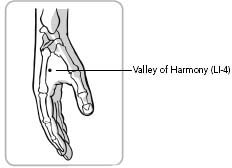
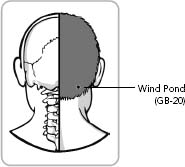
AVOID
• Scratching, as it exposes the skin to secondary infections.

• Exposure to temperature changes, cold or hot water, and detergents.

• Constipation, and make sure to keep your skin clean.

• Alcohol, smoking, and caffeine. They are irritants and can worsen allergies.

• Stress, anxiety, and emotional upsets. They are notorious for initiating flare-ups.
PSORIASIS
PSORIASIS IS A COMMON SKIN CONDITION that affects more than 6 million Americans, possibly the result of several factors, including heredity, lifestyle, and diet. It is a symptom of a faulty skin cell regeneration mechanism. Normal skin cells take up to a month to mature, but in patients with psoriasis this process is shortened to 5 to 7 days, producing excessive skin cells that cause the skin to thicken in raised red areas with silvery scales. Psoriasis commonly appears on the elbows, knees, groin, and scalp. Lesions that ooze and ulcerate may appear, causing pain. Flaking and itching are common, and about 10 percent of chronic psoriasis patients develop arthritis as well. Stress, obesity, exposure to environmental toxins, skin infections, alcohol use, and certain drugs can worsen the condition. Western medicine relies on steroidal creams, tar cream with UV light treatment, antibiotics, and immunosuppressants for relief.
In Chinese medicine, diseases of the skin have a direct link to the lung–large intestine network, which also governs the immune system. When the lungs are weak and attacked by pathogenic wind or microbes, the skin doesn’t receive proper nourishment. Heat toxins in the blood can also manifest as skin disease. Psoriasis is best treated when the underlying conditions are addressed either by dispersing the wind or clearing the heat and toxins from the skin.
I’ve worked with dermatologists on some very stubborn cases of psoriasis. One case involved a man who had severe psoriasis for six years—the thick patches of his skin wouldn’t clear up with steroids and tar and UV light treatments. After a cleansing and detoxification program, I put him on a vegetarian diet with no animal products at all. I administered a full course of acupuncture and herbal therapy to cleanse his body of heat and toxins and to harmonize his immune system to lower inflammatory reaction. After about five months, his skin cleared up by about 95 percent. With proper dietary and lifestyle adjustments and regular treatments, many of my patients have experienced relief from their symptoms.
Here is a summary of my approach.
DIET
• What you eat eventually ends up in your skin. People often eat without a second thought as to the content of their food. Many of our foods today contain chemical and artificial ingredients that can cause allergic reactions and irritate the immune system. Keep a diary of your meals, be more attentive to what you eat and your physical and emotional reactions, and soon you will discover whether you have allergic reactions to foods that contribute to your psoriasis. Avoiding these foods can significantly reduce flare-ups.

• Eat a wholesome diet with foods that nourish the skin. Favor broccoli, dandelion greens, mung beans, lentils, split peas, chickpeas, black beans, lima beans, pinto beans, seaweed, pearl barley, oats, adzuki beans, water chestnuts, winter squash, winter melon, watermelon, carrots, brewer’s yeast, olives, raspberries, papaya, pineapple, cherries, peaches, apples, pears, raisins, and grapes. Water is essential for cleansing the body. People who drink at least 80 ounces of water a day tend to have better bowel habits and develop fewer allergic reactions.

• Eliminate processed foods, foods containing artificial additives, bleached white flour, sugars, soft drinks, and spicy, deep-fried, and greasy foods. Stay off all animal foods, including meat, fish, poultry, dairy products, eggs, and shellfish, as well as highly allergenic foods such as wheat, corn, tomatoes, eggplant, peanuts, caffeinated beverages, alcohol, citrus fruits, and some soy products.
HOME REMEDIES
• Soak in a sulfur bath or hot spring for 20 minutes regularly to help the skin heal, or if that isn’t possible, soak in a warm Epsom salt bath for 20 minutes nightly until skin improves.
• Peel and slice 15 water chestnuts and place in a nonmetallic pot with 1 cup of rice vinegar. Slowly simmer for 20 minutes to allow the chestnuts to absorb the vinegar. Remove from the heat and let cool, drain the excess vinegar, and mash the chestnuts into a paste. Seal in a jar to store. Apply this solution with a loofah sponge and lightly scrub to thin out the thick patches of skin once a day.

• Boil 1 cup each of pearl barley and mung beans with 8 cups of water and drink 3 cups of the water every day. You should also eat the solids.

• Detoxify—some people benefit from a one-week cleansing diet based on our Tao of Wellness Cleansing and Detoxification Program, which includes fresh vegetables juice and broths, herbal therapy, body brushing, Tui Na lymphatic massage, acupuncture, cupping, far infrared sauna, and mind-body exercises. Go to www.taoofwellness.com for more information on the detoxification program.
DAILY SUPPLEMENTS
• Gamma-linolenic acid (GLA; 450 milligrams) taken daily can help regulate inflammatory response. Evening primrose oil and borage oil are good sources of GLA. Omega-3 fatty acids (1,000 milligrams EPA; 800 milligrams DHA) from fish and flaxseeds are also helpful.

• Vitamins B12 (200 micrograms), folate (400 micrograms), vitamin E (800 IU), zinc (50 milligrams), selenium (100 micrograms), and quercetin (500 milligrams) taken before meals help treat psoriasis.

• Taking probiotics (3 to 5 billion organisms) can help remove toxic substances and regulate immune response.
HERBAL THERAPY
• Herbs can be found in health food or vitamin stores, online, and at the offices of Chinese medicine practitioners. Herbs should be used according to individual needs; consult with a licensed practitioner for a customized formulation. To learn more about the herbs listed here, go to www.askdrmao.com.

• Burdock, red clover, licorice, chamomile, and calendula can help support skin health.

• Milk thistle stops the breakdown of substances that contribute to psoriasis and protects the liver. Other herbs helpful for treating psoriasis include yellow dock and sarsaparilla.

• Our Exquisite Skin Chinese herbal formula helps support healthy skin function and reduce itching. It contains siler, caltrop, schizonepetae, astragalus, peony, dong quai, Fo-Ti, rhubarb, licorice, and other Chinese herbs.

• For topical relief from itching, mix 10 drops of Tonic Oil (containing wintergreen, eucalyptus, menthol, and other herbs) with fresh aloe vera gel and apply liberally and frequently.
EXERCISE
Stress and anxiety can make psoriasis worse and possibly trigger outbreaks. I recommend that you include stress-reduction exercises in your regular workout routine. Tai chi and qi gong are great for reducing stress and calming the emotions. The General Cleansing Qi Gong exercise that follows can help with circulation and promote the opening of the pores. Do this exercise indoors and not too vigorously.
Sit comfortably or lie down on your back. Slow your respiration to deep, abdominal breathing. Say the word “calm” in your mind with every exhalation. You’ll be visualizing the relaxation of a body part and releasing tension with every exhalation. Trace the following 3 pathways outlined below.
Start at the top of your head. Inhale, and then exhale and visualize your scalp muscles relaxing. Say “calm” in your mind. Repeat this, saying the word with each body part as you move down through your face, throat, chest, abdomen, thighs, knees, calves, ankles, and feet. When you’ve relaxed your feet, visualize all the tension in your body leaving through your toes in the form of dark smoke.
Next, start at the temple region of your head. This pathway focuses on the sides and upper extremities. Inhale, and then exhale while visualizing your temple muscles relaxing. Say the word “calm” in your mind. Repeat this, saying the word with each body part as you move down through your jaw, the sides of your neck, shoulders, upper arms, elbows, forearms, wrists, and hands. Once you’ve relaxed your hands, visualize all the tension leaving your body through your fingertips in the form of dark smoke.
The final pathway begins at the back of your head. This pathway relaxes the back of your body. Repeat the breathing-visualization-word routine, as above, as you go from the back of your neck to your upper back, middle back, lower back, back of thighs, calves, and heels. Then focus on the acupoint Bubbling Spring (KID-1), on the soles of your feet, for 1 minute.
Practice this exercise for at least 15 minutes twice a day.
ACUPRESSURE
• Locate the acupoint Wind Pond (GB-20), in the natural indentation at the base of your skull on either side of your neck. Press and lift up toward the base of your skull with your thumbs and lean your head back. Use the weight of your head against your thumbs for a steady pressure. Hold for 5 minutes, breathing deeply and slowly.

• Find the acupoint Valley of Harmony (LI-4), in the web between your right thumb and index finger. Apply steady pressure with your left thumb until you feel soreness. Hold for 2 minutes. Repeat on the left hand.
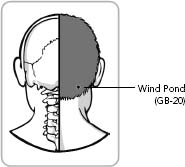
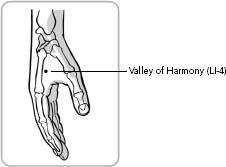
AVOID
• Exposure to temperature changes, cold or hot water, and detergents.

• Exposure to excess sunlight with strong UVA rays, as it can trigger psoriasis. (Small amounts of sun are helpful.)

• Dehydration and constipation, and keep your skin moist.

• Alcohol, nicotine, and caffeine, which are irritants that can worsen psoriasis.

• Stress, anxiety, and emotional upsets, which can initiate flare-ups of psoriasis.
RINGING IN THE EAR
THE CONDITION OF UNWELCOME NOISES IN YOUR EARS—which are often described as buzzing, roaring, ringing, whistling, or hissing sounds—is called tinnitus, which is the Latin word for ringing. Though not considered a serious or fatal condition, tinnitus does affect quality of life for many people. One in twenty Americans experiences prolonged tinnitus, and its occurrence increases with age. Tinnitus is almost always associated with hearing loss, and although the exact mechanism that produces the sounds is not well known, the sounds aren’t imaginary. The sounds may be intermittent, continuous, or pulsing. Tinnitus can interfere with normal activities and, because it usually is worse in the evenings, it tends to disturb sleep. There are many causes for tinnitus, including a degenerative auditory nerve, ear infections, neurological problems, and Ménière’s disease. Many prescription medications and chemotherapy can also cause tinnitus.
In Chinese medicine, the kidney-bladder network governs hearing and the ears. Tinnitus, then, is often associated with progressive kidney weakness brought on by overstrain, lack of sleep, and excessive sexual activity. Negative emotions are also often associated with tinnitus. Anger, frustration, resentment, and hatred block the liver energy, which over time produces fire rising up to the head, which disrupts hearing.
Diet plays a role as well. Overconsumption of cold and raw foods and dairy products promotes the formation of mucus, causing congestion and preventing proper nourishment of the ears. Digital audio player and cell phone use have contributed to the increased rate of hearing problems. I had a patient in his fifties who suddenly lost 50 percent of his hearing in one ear and lived with a terrible ringing in both of his ears for several years. He saw many hearing specialists, and all advised him to get a hearing aid. Unconvinced or perhaps unwilling to acknowledge his problems, he came to see me as a last resort. He was a typical type-A personality. He worked sixty hours a week and was constantly traveling by plane for work. He also suffered from chronic sinus allergies. I focused on strengthening his kidney network, which was weakened from the wear and tear of his life, and regulating his emotions to ease stress, while at the same time clearing away mucus blockage. In doing so, I removed the root causes of the condition and allowed his body to heal itself. By using acupuncture and herbal therapy and advising him on appropriate diet and lifestyle—I insisted that he not travel for three months—his hearing has improved and the tinnitus is hardly noticeable. His audiologist is quite happy with the results—and so is he.
DIET
• A healthy and balanced diet with smaller and more frequent meals including ample amounts of complex carbohydrates and wholesome proteins is a good start. Adding more warming foods, such as organic chicken and lamb, can help strengthen the kidney yang energy. Scallions, sesame seeds, fish, baked tofu, soybeans, walnuts, eggs, lentils, black beans, lotus seeds, ginger, and cinnamon bark are also helpful.

• Avoid cold and raw foods and icy beverages, as the coldness may constrict the eustachian tubes, causing poor drainage from the inner ears. Maintain a diet low in saturated fats and eliminate fried and greasy foods. Avoid processed meats and dairy products, as they have a tendency to increase mucus production. Protein deposits similar to those in milk have been found in the inner ears of patients with partial hearing loss.
HOME REMEDIES
• Simple ear irrigation can remove excess wax buildup, which may be a cause of tinnitus. Earwax kits are available at some local pharmacies. You may also want to visit your ENT specialist if the problem becomes severe.

• Make a tea by boiling 1 heaping tablespoon each of dried oregano, cilantro, rosemary, sage, and cinnamon and 3 slices of fresh ginger in 4 cups of water for 15 minutes. Seal the pot to prevent steam from escaping as it boils. Drink 3 cups a day for at least 3 weeks.

• Heat 2 tablespoons of salt and place in a cotton pouch, seal it, and use as a heat compress by placing it over the ear for 10 minutes a day.
DAILY SUPPLEMENTS
• Melatonin (1 to 3 grams) taken8 daily can lessen symptoms of tinnitus.

• Zinc (50 milligrams) and manganese (5 milligrams) taken daily can help diminish tinnitus.

• Vitamin B complex supplements, including B12 (200 micrograms) can relieve tinnitus resulting from noise damage.
HERBAL THERAPY
• Herbs can be found in health food or vitamin stores, online, and at the offices of Chinese medicine practitioners. Herbs should be used according to individual needs; consult with a licensed practitioner for a customized formulation. To learn more about the herbs listed here, go to www.askdrmao.com.

• Cordiceps taken 3 times daily has been shown in clinical studies to reduce tinnitus.

• Ginkgo biloba can help stabilize hearing loss and ringing by increasing capillary blood circulation.

• Traditional Chinese herbs for supporting healthy hearing function include rehmannia, wild yam, schizandra, Asian cornelian, and magnetite.
EXERCISE
Exercise is important for stimulating blood circulation, reducing cholesterol, and preventing the premature decline of vital energy. I recommend a regular regimen of daily qi gong and tai chi combined with moderate cardiovascular exercise. I use qi gong exercises with my patients to help maintain good hearing and reduce degeneration. The Liver Cleansing Qi Gong is very useful, as are the Immortal Beating the Heavenly Drum and Immortal Sounding the Heavenly Bell exercises, which can be found in the hearing loss section (page 317). Do these exercises daily for optimum results.
For the Liver Cleansing Qi Gong, stand with your feet shoulder-width apart in front of a tree. Inhale, and raise your right leg. Exhale, and place your right foot on the ground in front of you between your body and the tree.
Inhale, and raise both arms from the sides until they come together over your head. Exhale, and lower your hands in front of your face. Visualize green light running down your face as your hands move down to your chest.
Inhale, and move your hands to the right rib cage over your liver. Exhale, and move your arms down your right abdomen and right leg, as if pushing down and out with your hands. Visualize a green light moving the toxins out of the liver and down the liver meridian on the inside of your right leg and out of the big toe.
The tree is a receptacle of liver energy and is capable of regenerating itself, much like its ability to absorb toxic carbon dioxide and produce oxygen.
ACUPRESSURE
• Find the acupoint Outer Gate (SJ-5), two thumb-widths above the outer wrist crease of the right hand, between the two tendons. Apply pressure with your left thumb until you feel soreness. Hold for 2 minutes.

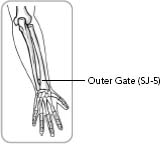
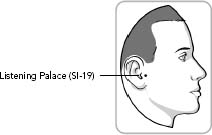
• Locate the acupoint Listening Palace (SI-19), directly in front of the right ear canal, in the depression formed when the mouth is slightly open. Apply steady pressure with your index or middle finger until you feel soreness. Hold for 2 minutes. Repeat on the left side.